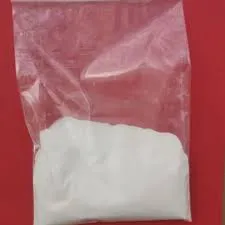Polyacrylamide in Water Treatment An Overview
Water scarcity and pollution are pressing global issues that require innovative solutions. One of the most prominent advancements in water treatment technology is the use of polyacrylamide (PAM), a water-soluble polymer that has found extensive applications in various sectors, particularly in water treatment processes. This article explores the characteristics of polyacrylamide, its functions in water treatment, and the benefits and challenges associated with its use.
What is Polyacrylamide?
Polyacrylamide is a synthetic polymer formed from acrylamide subunits. The polymer can exist in different forms, including anionic, cationic, or nonionic, depending on its molecular structure and the nature of the functional groups attached to it. Its high molecular weight and water solubility make it an effective flocculant, coagulant, and thickening agent, which is why it has gained popularity in the water treatment industry.
Functions in Water Treatment
Polyacrylamide plays a crucial role in various steps of water treatment processes. Here are some of its primary functions
1. Flocculation and Coagulation PAM is widely used as a flocculant and coagulant aid in water treatment. When added to water, it helps aggregate suspended particles, making them larger and heavier. This process facilitates their removal during sedimentation, leading to clearer water.
2. Sludge Dewatering In wastewater treatment plants, polyacrylamide is essential for sludge dewatering processes. It assists in the consolidation of sludge by binding fine solids together, enabling easier removal and reducing the volume of waste.
3. Control of Erosion In soil erosion control, PAM acts as a soil stabilizer, preventing soil from being washed away during heavy rainfall. When applied to soil, it increases water retention and improves infiltration rates, thus facilitating better water management.
4. Enhanced Oil Recovery While this may not directly relate to water treatment, PAM’s application in enhanced oil recovery processes provides cleaner water as it reduces the amount of wastewater generated and minimizes the risk of contamination.
Benefits of Using Polyacrylamide
The incorporation of polyacrylamide in water treatment offers a multitude of advantages
polyacrylamide water treatment

- Efficiency PAM enhances the efficiency of water treatment processes, leading to improved removal rates of suspended solids and increased clarity in treated water.
- Cost-Effectiveness By optimizing the water treatment process, PAM can help lower operational costs in wastewater treatment facilities, especially concerning the quantities of coagulants needed.
- Environmental Impact When used responsibly, PAM can reduce the environmental impact of water treatment operations by minimizing sludge production and facilitating easier disposal methods.
- Versatility Its various formulations allow for tailored applications in different water conditions, making it suitable for a wide range of environmental scenarios.
Challenges and Considerations
Despite its advantages, the use of polyacrylamide in water treatment is not without challenges
- Toxicity Concerns Acrylamide, the monomer used to produce PAM, is classified as a potential neurotoxin. Although the polymer form is generally considered safe, precautions must be taken to prevent the release of unpolymerized acrylamide into water sources.
- Environmental Effects The long-term environmental impact of PAM, especially in terrestrial and aquatic ecosystems, remains a topic of ongoing research. Understanding its biodegradability and interaction with other environmental components is crucial.
- Regulatory Compliance Water treatment facilities must adhere to strict regulations concerning the usage of chemicals, including PAM. Ensuring compliance with health and environmental standards is critical for maintaining public safety.
Conclusion
Polyacrylamide is a powerful tool in the water treatment industry, offering significant benefits in enhancing water quality while aiding in sustainable practices. Its multifunctional capabilities, combined with the ongoing need for efficient water management solutions, position it as an essential component in combating the challenges of water pollution and scarcity. However, as with any chemical application, it is vital to approach its use with caution, ensuring both effectiveness and environmental safety in water treatment processes. Continuous research and responsible application will further unveil the potential of polyacrylamide in promoting a cleaner, more sustainable future for global water resources.

